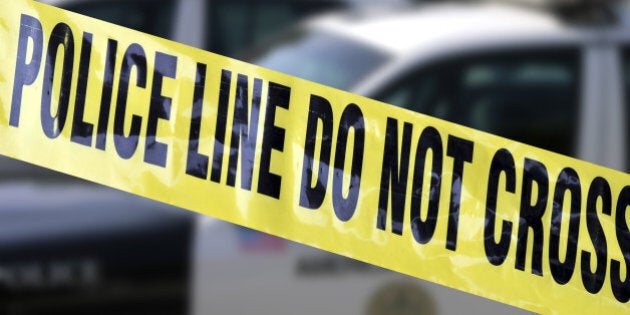
The December 2012 shooting at the Sandy Hook Elementary School that claimed the lives of twenty children and six adults shocked the world. The call for greater school safety following this tragedy led to virtually every state legislature in the United States introducing new laws to make schools safer.
Along with laws to improve school security being passed in twenty states, communities across the country have spent millions of dollars beefing up school security. This includes installing metal detectors, electronic door locks, bullet-proof glass, intruder alarms, and security cameras to keep school grounds under continuous surveillance. Considering the cutbacks in public education that are becoming far too common these days, spending money on security measures usually means making sacrifices elsewhere. Whether this means larger classroom sizes, fewer teachers, or less spending on textbooks and other educational materials, the fear of future school shootings is definitely having a dramatic impact on the kind of education children are receiving.
But is this fear actually justified? While every parent needs to worry about the safety of their children, the kind of mass casualty events such as what happened at Sandy Hook are still relatively rare. According to a 2010 report by the Center for Disease Control and Prevention, 14 to 34 school-age children were victims of homicide at school every year from 1992 to 2010. By contrast however, homicides involving children were overwhelmingly more likely to occur outside of school. In the 2009-2010 period alone, 19 school-associated homicides occurred compared to 1,377 homicides outside of school during that same period.
While those involved regular shootings rather than the mass-casualty events that have people so fearful, they are also much less likely to draw real media attention. They also highlight the role that firearms play in these tragedies and, inevitably, the question of gun control arises with the political baggage that comes with it. Proposals to curb school shootings have ranged from a ban on firearm purchases to arming school teachers to prevent further school shootings. These incidents have also promoted a "zero tolerance" atmosphere in many communities in which even bringing a paring knife to school can result in children being expelled, or even arrested, presumably to eliminate the "threat" they pose.
But how prevalent are school shootings really? A new study published in the journal Psychology of Violence examined more than 18,000 homicide incidents from 2005 to 2010. Carried out by Erin K. Nekvasil at the University of Virginia's Curry School of Education and her fellow researchers, the study used the National Incident-Based Reporting System (NIBRS) maintained by the Federal Bureau of Investigation. The NIBRS database is used by law enforcement agencies across the United States to collect information on a wide range of criminal offenses, including homicide, and has been an important tool for researchers as well.
According to the NIBRS, there have been 3,145 homicides each year from 2005 to 2010 for a total of 18,873 homicides studied. Of these, 14,475 cases involved a single victim (78 per cent) and 4,398 (22 per cent) involved more than one victim. As for where the homicides occurred, the most common location was at a person's residence (52 per cent) or other public locations such as highways/freeways, parking lots, etc. Only .3 per cent of all homicides and 8 per cent of mass casualty incidents actually occurred at a school during the five years covered in the study. As for weapons used, about 68 per cent of all homicides involved firearms with most homicides involving either acquaintances (46 per cent) or close relatives (38 per cent). Only sixteen per cent of all homicides involved total strangers. Of the school homicides alone, about 39 per cent were committed by adolescents who typically kill only a single person rather than carry out a mass shooting.
What this study showed was that, according to homicide statistics, schools are actually among the safest places in the United States despite the hysteria linked to school shootings. With major cutbacks in education funding, these findings strongly suggest that there is little real need for spending large amounts on improved security measures that likely won't improve school safety. Also, considering that children are far more likely to be killed at home or other places in the community, it would be a better investment to put more money into community policing to respond to complaints of domestic violence and to improve public safety.
Due to the "culture of fear" that often arises over incidents such as Sandy Hook, people frequently develop exaggerated fears that are not justified by the actual facts. As Erin Nekvasil and her co-authors pointed out, killings are far more likely to occur in restaurants than in schools though there doesn't appear to be any concern about "restaurant violence" or a call to arm food servers.
While the NIBRS database is limited with many states and police agencies not participating, the overall trend seems clear enough. Though schools often rely on expensive security procedures and "zero tolerance" policies that may not do any good, there may be more effective alternatives. These include referring high-risk students to mental health professionals for threat assessments to evaluate actual risk. Since school shooters almost always tell others about their plans for violence or make extensive preparations that can be reported by others, the FBI and Secret Service have recommended the use of formal threat assessment guidelines in K-12 schools. Programs looking at family members at risk for violence may be needed as well, along with crisis intervention teams to defuse high-risk situations.
Then again, there is also the strong link between firearms and mass-casualty incidents such as school shootings. While gun control remains a politically-charged issue in the United States, a ban on firearm sales to high-risk individuals, including people suspected of violence or who have serious mental health problems is definitely needed.
Overall, there is no one solution that can prevent school shootings, the current fear that often surrounds issues involving school safety likely does more harm than good. Despite well-publicized incidents such as Columbine and Sandy Hook, the risk of children being killed in a school shooting remains low. Staying aware of people making threats or who might pose a serious risk of violence, including domestic violence in the home, can keep it that way.
ALSO ON HUFFPOST:
